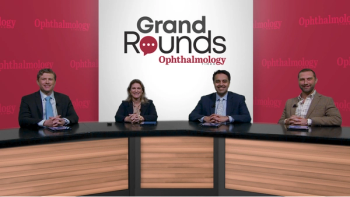
David R. Lally, MD
Articles by David R. Lally, MD



Retinal specialists conclude their discussion with key highlights from each patient case of retinal vascular disease and pearls the audience can apply in their practice.

In this final case, Sumit Sharma, MD, FASRS presents his case of neovascular AMD with a severe retinal pigment epithelial detachment who experienced a higher durability with a newer agent.

Lisa J. Faia, MD asks the panel about their concerns regarding the safety of newer agents for the broad array of retinal vascular diseases, highlighting the similarities and differences between clinical trial outcomes and real-world results.

In the third case, moderator Lisa J. Faia, MD presents her case of persistently active central retinal vein occlusion (CRVO), explaining her approach to switching this treatment-resistant patient to a newer agent.

Sumit Sharma, MD, FASRS ponders to the panel the root cause of improved outcomes with newer agents. The panel then highlights current gaps in measuring visual improvements beyond tools such as the OCT, emphasizing the need for patient-centered treatment plans.

In the second case, Scott D. Walter, MD, MSc, FASRS presents a patient case of diabetic macular edema (DME) where each eye was treated with a different agent. Walter presents optical coherence tomograph (OTC) outcome similarities and differences in key criteria, such as neovascularization, micro aneurism leakage, and macular leakage.

Sumit Sharma, MD, FASRS asks the panel what they are using for first-line AMD treatment and what considerations factor into decision making, such as insurance coverage or risk of inflammation.

In the first case, David Lally, MD presents a patient case of age-related macular degeneration (AMD) highlighting the superior durability of newer treatments.
Latest Updated Articles
 Q&A: The ARCHER trial and the importance of continued GA research
Q&A: The ARCHER trial and the importance of continued GA researchPublished: October 3rd 2025 | Updated:

